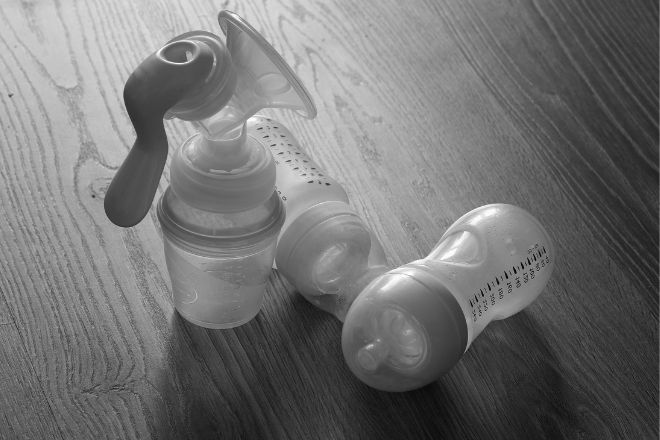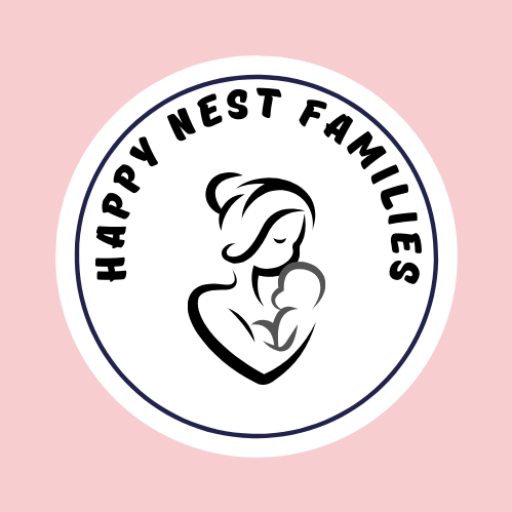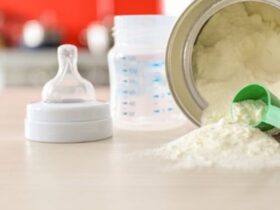Table of Contents
Breastfeeding and Bottle Feeding: Breastfeeding offers optimal nutrition and antibodies to infants, while bottle-feeding provides convenience and flexibility. Each feeding method has distinct benefits and considerations for a baby’s health and a mother’s lifestyle.
Deciding between breastfeeding and bottle-feeding is a significant choice for new parents. Breast milk is considered the gold standard for infant nutrition, providing a perfect balance of vitamins, proteins, and fats essential for a baby’s growth and development. It also contains antibodies that help protect infants from various illnesses.
On the other hand, bottle-feeding with formula can be a practical alternative, offering caregivers more freedom and the ability to measure exactly how much the baby consumes. This method can be particularly beneficial for mothers who may have difficulty breastfeeding due to medical reasons or who return to work shortly after childbirth. The choice between breastfeeding and bottle-feeding is personal and can be influenced by many factors, including health considerations, lifestyle, and the baby’s needs. Parents should consult with healthcare providers to make an informed decision that aligns with their circumstances and ensures the well-being of their child.

The Benefits Of Breastfeeding
Choosing between breastfeeding and bottle-feeding is a big decision for parents. Both have their pros and cons. Yet, breastfeeding offers unique benefits. Let’s explore the advantages of breastfeeding, focusing on its nutritional and health benefits.
Nutritional Benefits
Breast milk is like a superfood for babies. It has the perfect mix of vitamins, fat, and protein. This balance helps babies grow just right. Here’s a closer look at the nutritional benefits:
- Right mix of nutrients: Breast milk changes to meet your baby’s needs. It evolves from colostrum to mature milk, offering the right nutrition at each stage.
- Easy to digest: For most babies, breast milk is easier to digest than formula. This means less fussiness and gas.
- Supports brain development: Breast milk is rich in fatty acids. These are crucial for brain and vision development.
Beyond these points, breast milk also protects babies from infections and diseases. This is because it is full of antibodies. These help your baby fight off viruses and bacteria. Let’s see this in a table:
| Component | Benefit |
|---|---|
| Antibodies | Fight off viruses and bacteria |
| Fatty Acids | Support brain and vision development |
| Proteins | Easy to digest, less fussiness |
Health Benefits
Breastfeeding is not just good for babies. It also has great perks for moms. Let’s dive into the health benefits for both mom and baby:
- Boosts baby’s immune system: Breast milk strengthens your baby’s immune system. This means fewer visits to the doctor.
- Less risk of diseases: Breastfeeding lowers the risk of asthma and allergies in babies. It also reduces the chances of obesity and diabetes as they grow.
- Benefits for mom: Moms who breastfeed have a lower risk of breast and ovarian cancer. They also find it easier to lose pregnancy weight.
These benefits show how breastfeeding can be a powerful choice for your family. It supports your baby’s health from day one. Plus, it creates a special bond between mom and baby. Breastfeeding benefits for mom and the breastfeeding benefits for baby’s immune system are clear. It’s a natural way to give your child a great start in life.
The Challenges Of Breastfeeding
Choosing between breastfeeding and bottle-feeding is a personal decision for every parent. Each method comes with its own set of benefits and hurdles. For those who opt for breastfeeding, the experience, while rewarding, can present several challenges. From mastering the technique to ensuring a consistent milk supply, new mothers often face obstacles that can make this natural process feel anything but. Let’s delve into the common issues many mothers encounter, and explore breastfeeding challenges and solutions.
Latch Difficulties
Getting a newborn to latch properly can be tough. A good latch is crucial for effective breastfeeding. It ensures the baby gets enough milk and helps prevent nipple pain and damage. Here are common latch problems and solutions:
- Improper Positioning: Baby’s position affects the latch. Ensure the baby’s mouth covers more of the areola below the nipple than above.
- Flat or Inverted Nipples: Nipple shields or pumps can help draw out the nipple, making it easier for the baby to latch on.
- Tongue or Lip Ties: These can restrict a baby’s ability to latch. Consultation with a lactation specialist or pediatrician is advised.
See the table below for a quick guide on signs of a good vs. poor latch:
| Good Latch | Poor Latch |
|---|---|
| Baby’s mouth covers a large part of the areola | Baby’s mouth is mostly on the nipple |
| Chin and nose touch the breast | Chin and nose are away from the breast |
| Feeding is comfortable and painless | Feeding causes discomfort or pain |
Seeking help from a lactation consultant can provide personalized breastfeeding challenges and solutions for latch difficulties.
Supply Concerns
Many mothers worry about their milk supply. It’s normal to wonder if your baby is getting enough to eat. Here’s what to look out for and how to boost supply if needed:
- Frequency of Feeding: The more you feed, the more milk you produce. Aim for 8-12 feedings per 24 hours.
- Hydration and Diet: Drink plenty of fluids and maintain a balanced diet to support milk production.
- Rest: Being well-rested is key to maintaining milk supply, though it’s often easier said than done with a newborn.
If concerns about supply persist, consider the following steps:
- Consult with a healthcare provider to rule out any underlying issues.
- Use a breast pump to stimulate production and create a milk stash.
- Track wet and soiled diapers to ensure the baby is getting enough milk.
Remember, supply concerns are common, and solutions are available. Support from healthcare professionals, lactation consultants, and peer support groups can be invaluable in navigating these challenges.

Advantages Of Bottle-feeding
Choosing between breastfeeding and bottle-feeding is a personal decision for new parents. Both methods offer unique benefits. This section highlights the advantages of bottle-feeding. From convenience to dietary control, bottle-feeding can be a practical choice for families. It supports various lifestyles and provides flexibility that breastfeeding may not offer. Let’s explore these benefits further.
Convenience
Bottle-feeding stands out for its convenience. Parents and caregivers can prepare bottles in advance, which is perfect for on-the-go feeding. Here are some points that showcase the convenience of bottle-feeding:
- Preparation Ahead of Time: Caregivers can make bottles before leaving the house.
- Nighttime Feeds: Bottles can be ready beside the bed for easy night feeds.
- Sharing Responsibilities: Anyone can feed the baby, allowing the mother to rest.
Moreover, bottle-feeding techniques for newborns are easy to grasp. This ensures that even babysitters or relatives can feed the baby without hassle. Bottle-feeding also eliminates the need for the mother to be present at every feeding session, adding to the overall convenience.
Flexibility
Flexibility is a significant advantage of bottle-feeding. It allows parents to maintain their lifestyle while ensuring their baby is well-fed. Let’s break down the flexibility that comes with bottle-feeding:
- Work Schedules: Parents can return to work without worrying about feeding schedules.
- Dietary Control: Formula quantity and schedule are easily managed.
- Public Feeding: Feeding in public is straightforward with a bottle.
Bottle feeding allows others to help, giving the primary caregiver a chance to focus on other tasks or self-care. This flexibility is crucial for many families, particularly when balancing work and childcare.
What Are the 5 Advantages Of Bottle Feeding?
Bottle feeding has several key advantages that make it an appealing choice for many families. Here are five notable benefits:
- Consistent Supply: Formula provides a consistent milk supply.
- Measurable Intake: Parents can track exactly how much the baby consumes.
- Less Physical Demand on Mother: Mothers avoid the physical demands of breastfeeding.
- Diet Flexibility: Mothers don’t need to worry about how their diet may affect the baby.
- Medication Concerns: Mothers can take medications without worrying about passing them to the baby through breast milk.
Each advantage adds to the overall appeal of bottle-feeding. Parents can ensure their baby’s needs are met while also catering to their own lifestyle and well-being.
Disadvantages Of Bottle-feeding
Choosing between breastfeeding and bottle-feeding is a personal decision every parent must make. While bottle-feeding may seem convenient, it comes with several drawbacks. Understanding these disadvantages is vital for parents to make an informed choice that best suits their family’s needs.
Lack Of Antibodies
Breast milk is a unique nutritional source that provides antibodies essential for a baby’s immune system. These are not present in formula milk. Here are some key points about the lack of antibodies in bottle-feeding:
- Formula does not contain immunoglobulins, which protect against infections.
- Babies bottle-fed may face more frequent and severe illnesses.
- Lack of maternal antibodies can affect a child’s long-term health.
Studies show that breastfed infants have better overall immunity than those who are bottle-fed. A comparison table highlights the differences:
| Breast Milk | Formula Milk |
|---|---|
| Rich in antibodies | No antibodies |
| Less sick days | More prone to illness |
| Strong immune system | Weaker immune defense |
Cost
The expense of bottle-feeding can be a significant drawback for many families. Unlike breast milk, which is free and readily available, formula milk can be costly. Here’s what parents should consider:
- Formula can be expensive over time.
- Additional costs include bottles, teats, and sterilizing equipment.
- Price varies by brand and type of formula, adding to the expense.
The financial impact can be better understood with a simple breakdown:
| Item | Cost |
|---|---|
| Monthly Formula | $100 – $200 |
| Bottles & Accessories | $50 – $100 |
| Annual Total | $1800 – $3600 |
Why Is Bottle Feeding Not Recommended?
Experts often favor breastfeeding over bottle-feeding for several reasons. Bottle-feeding lacks some key benefits:
- It does not provide the perfect balance of nutrients like breast milk.
- Formula cannot adapt to the changing needs of a growing baby.
- Babies miss out on the bonding experience with their mother.
Additionally, bottle-feeding can lead to improper jaw and teeth development due to the different sucking mechanisms required compared to breastfeeding. With these factors in mind, many health organizations promote breastfeeding as the optimal choice for infant nutrition.

Bonding And Emotional Aspects
Choosing between breastfeeding and bottle-feeding is a personal decision for parents. Each method offers unique opportunities for bonding and emotional connection. This critical aspect of early parenting plays a vital role in the development of a strong, loving relationship between parents and their child. Let’s delve into how each feeding method can foster bonding and support emotional well-being.
Breastfeeding And Bonding
Breastfeeding is a natural process that provides more than just nutrition. It creates a unique emotional bond between mother and baby. The skin-to-skin contact during breastfeeding promotes a sense of warmth and safety for the infant. Oxytocin, often called the ‘love hormone,’ is released in both mother and child during these moments, enhancing feelings of attachment and affection. Here are some key points about breastfeeding and bonding:
- Physical closeness: Breastfeeding requires mother and baby to be close. This physical proximity helps the baby feel secure.
- Gaze and touch: The eye contact and gentle touches during breastfeeding further strengthen the emotional connection.
- Responsive feeding: Mothers learn to read their baby’s hunger cues, fostering a responsive care environment.
This table outlines the key components of the bonding experience through breastfeeding:
| Component | Description |
|---|---|
| Physical Contact | Body warmth, heartbeat, and cuddles create a nurturing space. |
| Emotional Response | Oxytocin release deepens love and attachment. |
| Communication | Mother learns baby’s feeding signals, cries, and body language. |
Bonding With Bottle-feeding
Bottle feeding, whether with expressed breast milk or formula, also offers ample opportunities for bonding. Parents can hold their babies close, maintaining valuable skin-to-skin contact. Eye contact, talking, and singing to the baby during bottle feeds create a loving and attentive atmosphere. Bonding with bottle-feeding includes:
- Shared experience: Both parents can participate in bottle-feeding, allowing for shared bonding time.
- Flexibility: Feeding can take place anywhere, any time, ensuring the baby feels comforted and connected.
- Feeding rhythm: Parents can mimic the breastfeeding rhythm, pausing for burps and cuddles, to enhance the bond.
Consider this table to understand the bonding aspects of bottle-feeding:
| Aspect | Impact on Bonding |
|---|---|
| Inclusive Feeding | Other family members can feed and bond with the baby. |
| Engagement | Conversations and facial expressions during feeding promote connection. |
| Consistency | Regular feeding schedule helps baby feel secure and loved. |
Feeding In Public
Deciding between breastfeeding and bottle-feeding is a personal choice for parents. Each method offers benefits and challenges. One aspect both have in common is the need for feeding in public. This can be a source of stress for parents. Let’s explore how each feeding method plays out when away from home.
Breastfeeding In Public
Breastfeeding, while the most natural way to feed a baby, often comes with societal scrutiny. Parents may feel anxious about public reaction. Yet, it’s important to remember that breastfeeding is a right and in many places, legally protected. Here are some points to consider:
- Comfort: Find a quiet spot where both you and your baby can relax.
- Discretion: If privacy is a concern, use a cover or wear clothes that provide easy access without full exposure.
- Legal Rights: Know the laws in your area that support breastfeeding in public spaces.
Many public places now offer dedicated spaces for breastfeeding. These provide a comfortable and private area for mothers and their babies. See the table below for a quick guide on finding these spots.
| Location Type | Availability of Breastfeeding Areas |
|---|---|
| Shopping Malls | Often available in restrooms or family rooms |
| Airports | Special rooms or pods are increasingly common |
| Parks | Benches and quiet spots may be available, though not always private |
Bottle-feeding In Public
Bottlefeeding in public comes with its own set of considerations. It can be seen as more socially acceptable, but it also requires preparation. Here’s what to keep in mind:
- Preparation: Pack enough formula or expressed milk and clean bottles.
- Temperature: Bring a thermos of warm water if your baby prefers warm milk.
- Cleanliness: Use a bottle with a cap to keep the nipple clean.
Just like breastfeeding, there are spaces in public areas for parents to comfortably bottle-feed. The table below outlines some common locations and their amenities.
| Location Type | Facilities for Bottle-Feeding |
|---|---|
| Restaurants | Booth seating can offer more privacy |
| Public Transit | Seating areas may be available for feeding |
| Playgrounds | Bench areas are often nearby for feeding breaks |

Impact On Mother’s Health
Choosing between breastfeeding and bottle feeding is a personal decision that impacts both baby and mother. It’s vital to consider the impact on the mother’s health when making this choice. Breastfeeding can influence postpartum recovery, while bottle-feeding has implications for maternal health. Let’s explore these aspects to understand the benefits and challenges each option presents for mothers.
Breastfeeding And Postpartum Recovery
Breastfeeding offers unique benefits for mothers’ postpartum recovery. The act of breastfeeding triggers the release of the hormone oxytocin, which helps the uterus return to its pre-pregnancy size and can reduce postpartum bleeding. Here are some key points:
- Weight loss: Mothers often return to pre-pregnancy weight faster due to calories burned while breastfeeding.
- Emotional health: Breastfeeding can enhance bonding with the baby and reduce the risk of postpartum depression.
- Risk reduction: It lowers the risk of certain cancers and type 2 diabetes.
Mothers who breastfeed may also experience long-term health benefits:
| Health Benefit | Details |
|---|---|
| Ovarian Cancer Risk | Reduced risk with longer breastfeeding duration |
| Breast Cancer Risk | Lowered with each month of breastfeeding |
| Osteoporosis | Lower risk later in life |
Despite these benefits, challenges like sore nipples, engorgement, and the need for significant time commitment can affect mothers.
Bottle-feeding And Maternal Health
Bottle feeding, whether with formula or expressed breast milk, presents different aspects for maternal health. Mothers can share feeding responsibilities, which allows for more flexibility and rest. Here’s what to consider:
- Flexibility: Mothers gain time for personal care or returning to work.
- Medications: Some can resume medications not compatible with breastfeeding.
- Sleep: More sleep is possible when sharing nighttime feedings.
However, bottle-feeding moms might miss out on certain health benefits associated with breastfeeding. Key points include:
| Consideration | Impact |
|---|---|
| Physical Recovery | May take longer without hormonal benefits of breastfeeding |
| Emotional Connection | May require different bonding strategies |
| Health Risks | Potentially higher risk of certain health conditions |
It’s crucial to note that bottle-feeding does not diminish the love or bond between a mother and her child. Each family must weigh the pros and cons to make the best choice for their situation.
Support And Resources
Choosing between breastfeeding and bottle-feeding is a big decision for new parents. Each method has its benefits. But, both need support and resources to make feeding easier and better. Let’s dive into the support and resources available for both.
Breastfeeding Support
Finding the right support for breastfeeding is crucial. It can make the journey smoother for both mom and baby. Here are some ways to get the support you need:
- Lactation Consultants: They are experts in breastfeeding. They can help solve problems like latching issues.
- Breastfeeding Groups: Joining a group can give moms a chance to share experiences and tips.
- Online Resources: Websites and forums offer advice 24/7.
- Healthcare Providers: Doctors and nurses can provide medical advice and support.
Here is a table of common breastfeeding challenges and solutions:
| Challenge | Solution |
|---|---|
| Latching Problems | Consult a lactation expert |
| Pain | Use the correct position and latch technique |
| Low Milk Supply | Feed more often and stay hydrated |
Bottle-feeding Resources
Bottle-feeding comes with its set of challenges. But, the right resources can make it easier. Here are some valuable resources for bottle-feeding parents:
- Pediatricians: They can advise on the best formula and feeding schedule.
- Formula Companies: Many offer free samples and feeding guides.
- Parenting Groups: Other parents can share their experiences and tips.
- Online Guides: There are step-by-step guides for preparing bottles.
This table lists common bottle-feeding questions and where to find answers:
| Question | Resource |
|---|---|
| Which formula is best? | Pediatrician |
| How to sterilize bottles? | Online guides |
| Formula feeding schedule? | Parenting groups |
Both breastfeeding and bottle-feeding have their support systems. Use them to make feeding your baby a positive experience.

Combination Feeding
The choice between breastfeeding and bottle-feeding is a personal one for new parents. Each method has its unique benefits and challenges. For some families, combination feeding—using both breast milk and formula—can offer a flexible middle ground. This approach allows parents to merge the perks of breastfeeding with the convenience of bottle-feeding. Let’s explore the advantages and difficulties of combination feeding to help parents make informed decisions.
Benefits
Combination feeding can be a game-changer for many families. Here are some of its benefits:
- Flexibility: Parents can switch between breast and bottle, offering freedom and convenience.
- Bonding: It allows both parents to share the feeding responsibilities, fostering a bond with the baby.
- Time Management: Formula can provide a helpful option when breastmilk is not available, saving time.
- Health Benefits: Babies still receive the immune-boosting properties of breastmilk.
Let’s put these benefits into perspective with a table:
| Benefit | Description |
|---|---|
| Flexibility | Parents can adapt feeding methods to suit their schedule. |
| Bonding Time | Feeding is shared, increasing quality time with the baby. |
| Time Management | Formula offers a quick alternative when needed. |
| Health Benefits | Breastmilk components support the baby’s immune system. |
Challenges
Despite its benefits, combination feeding comes with its own set of challenges:
- Nipple Confusion: Babies might struggle switching between breast and bottle.
- Milk Supply: Regular breastfeeding is key to maintaining supply, which can be affected by combination feeding.
- Extra Planning: It requires careful tracking of feedings to ensure the baby gets enough breastmilk and formula.
- Cost: Formula can add extra expense to the family budget.
Consider these challenges in detail:
| Challenge | Description |
|---|---|
| Nipple Confusion | Babies may prefer one feeding method, complicating the switch. |
| Milk Supply Issues | Without consistent breastfeeding, milk production can drop. |
| Extra Planning | Managing both breastmilk and formula requires organization. |
| Cost Implications | Buying formula can increase the monthly budget. |
Making The Decision
Choosing between breastfeeding and bottle-feeding is a pivotal decision for new parents. Both options provide nutrition for infants, but they come with different experiences and benefits. Making the decision on how to feed your baby is personal and can depend on many factors. It’s essential to weigh the pros and cons, consider individual circumstances, and seek advice from healthcare professionals.
Considering Individual Circumstances
Each family’s situation is unique, and what works for one may not work for another. Parents should consider various factors such as:
- Lifestyle: A parent’s work schedule, the need for flexibility, or the desire for shared feeding responsibilities may influence the choice.
- Health: Some medical conditions can affect a mother’s ability to breastfeed, making bottle-feeding a necessary alternative.
- Baby’s needs: Occasionally, infants may have special nutritional requirements or allergies that dictate the feeding method.
Personal comfort and the baby’s health should guide this decision. Here’s a simple table comparing key aspects of both feeding methods:
| Aspect | Breastfeeding | Bottle-feeding |
|---|---|---|
| Convenience | Immediate, no preparation needed | Requires preparation and equipment |
| Cost | Generally free | Cost of formula and supplies |
| Bonding | Physical closeness with the baby | Opportunity for others to bond during feeding |
Consulting Healthcare Professionals
Seeking professional advice is vital in making an informed choice. Pediatricians and lactation consultants can provide:
- Insights into the health benefits of breastfeeding, such as immunity and optimal nutrition.
- Guidance on formula types if bottle-feeding is the chosen or necessary route.
- Support and solutions for common feeding problems, whether breastfeeding or bottle-feeding.
Doctors can also help parents understand the emotional and psychological impacts of their feeding choice. They can suggest resources and support groups for additional help.
Which Is Better Breast Or Bottle?
The debate between breastfeeding and bottle-feeding is ongoing. Breastfeeding offers unique benefits such as antibodies and a perfect nutrient balance. It also fosters a strong bond between mother and child. On the other hand, bottle-feeding with formula can provide vital nutrition and greater flexibility. The best choice is the one that aligns with the family’s needs and the baby’s wellbeing. Here are some points to consider:
- Breastfeeding is recommended by health organizations for its health advantages for both mother and child.
- Bottle-feeding can be a practical alternative for parents who face breastfeeding challenges.
- Choosing to combine both methods is an option, known as mixed feeding.
What Age Should Stop Bottle-feeding?
The transition away from bottle-feeding varies for each child. Typically, health experts suggest starting to wean off the bottle between 12 to 24 months. Prolonged bottle use can lead to issues like tooth decay or overconsumption of milk. Parents can look for signs that their child is ready, such as:
- Decreased interest in the bottle
- Ability to drink from a cup
- Increased consumption of solid foods
It’s important to replace bottle feedings with balanced meals and healthy snacks. Gradual reduction of bottle feedings can make the process easier.

Is Bottle-feeding Just As Good As Breastfeeding?
Bottle feeding can be a suitable alternative to breastfeeding, offering convenience and flexibility. While breastfeeding has unique health benefits for both baby and mother, formula provides essential nutrients for growth. Ultimately, the best choice depends on individual circumstances, ensuring babies receive the necessary nourishment and care.
What Are The Disadvantages Of Bottle-feeding Over Breastfeeding?
Bottle-feeding may lack antibodies found in breast milk, potentially increasing infection risks. It can be less economical due to formula costs and requires preparation time. Bottle-feeding also misses the bonding experience breastfeeding offers.
What Are The Disadvantages Of Not Breastfeeding?
Not breastfeeding can lead to higher risks of infections and allergies for the baby. It may also affect maternal bonding and increase postpartum depression. The mother might experience delayed uterine shrinkage and higher risk of certain cancers.
How Close Is Formula To Breast Milk?
Formula is designed to mimic breast milk closely, but it’s not an exact match. It contains similar nutrients, yet lacks some antibodies and living cells found in breast milk. Manufacturers continually refine formulas to enhance their resemblance to breast milk, aiming for optimal infant nutrition and development.
Which Is Healthier: Breastfeeding Or Bottle-feeding?
Breastfeeding is generally considered healthier due to the natural nutrients and antibodies provided. However, formula feeding can also be nutritious and safe.
Choosing between breastfeeding and bottle-feeding is deeply personal. Each method offers unique benefits and challenges, aiming to nourish and bond with your baby. Your decision should align with your lifestyle, health, and comfort. Remember, consulting healthcare professionals can provide guidance tailored to your needs, ensuring the best start for your little one.






Leave a Reply
View Comments